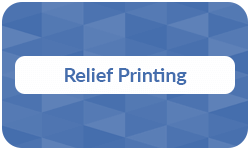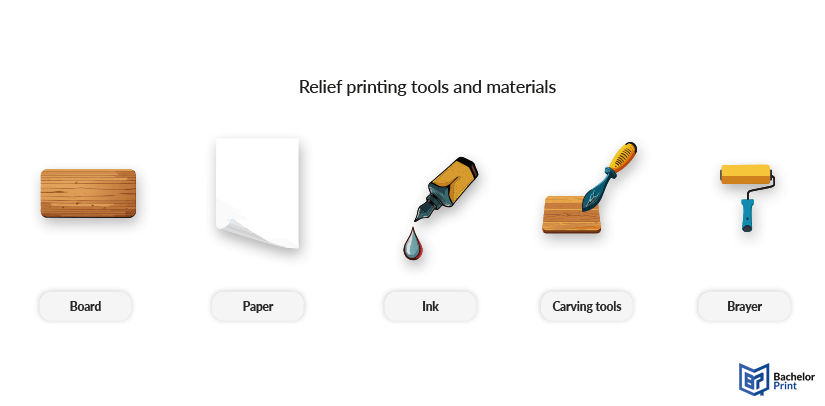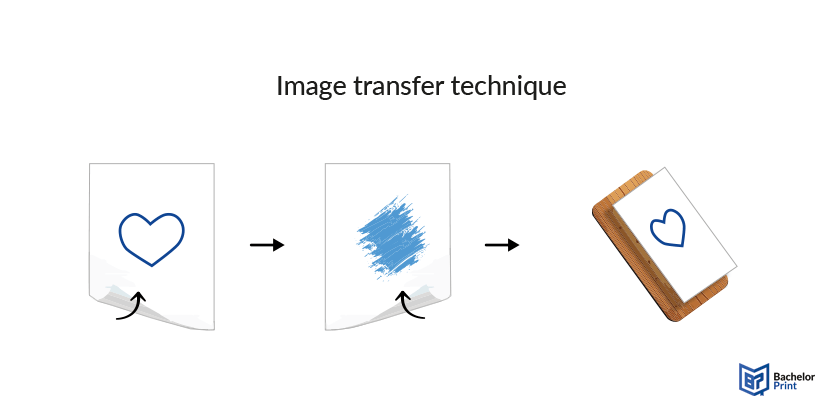
Printing in the modern sense mainly refers to the process of transferring a digital document onto paper. However, printmaking itself has a far longer history. The first things to be printed were not texts, but images, intricately carved into wood, metal, and other materials. In this procedure, two types of techniques can be applied: intaglio printing and relief printing. The following article will explore the latter topic in detail.
Definition: Relief printing
Relief printing is a process where a block of material, such as linoleum or wood, is cut in a way that the image is depicted on the raised surface while the non-printed parts have been cut away. Thereafter, the printing ink is applied using a dabber or a roller before a sheet of paper is pressed onto the inked surface by hand or by using a printing press.

Printing services at BachelorPrint
- Individual solutions & personal support
- High print quality & fast production times
- Wide range of print products for every need
Learn more!
Tools and materials
Before you can start a relief printing project, you need to consider which tools and materials are necessary. First of all, you need the base material, from which the image is carved. This material is, in most cases, linoleum or wood, but also metal, rubber, foam, or potato. Furthermore, besides the right type of printer paper, you will also need printing ink, different carving tools, and a brayer.

Process
The process of any type of relief printing is divided into four steps, which will be explained in the following.

Sketch design
Before you can start carving, you first need to sketch a design. This can either be done directly on the carving block or a separate paper. If the design is sketched on a separate piece of paper, it has to be transferred onto the carving block. Transfer paper is one method to use while applying oil chalk, or you can trace the lines with a softer pen on the backside and then trace the front again.

Carve design
The next step is to carve the design. Therefore, all the surfaces that shall be printed need to stay, while everything that is supposed to appear white needs to be cut away. This step requires special focus and attention to detail, as the scraping is not reversible and every mistake will show up in the final piece.


Apply ink
After the template is carved out, the ink has to be applied. The brayer roller is covered in paint by continuously rolling it across an ink plate until it achieves an even layer. Then the brayer gets dragged across the carving. Make sure not to press too hard so that no ink seeps into the carved areas.
Print on paper
The last step is the actual printing. Here, the printer paper is placed onto the carving block (or the carving block is placed onto the paper; however, this might be more challenging to achieve without smudging). The pressure needed to transfer the image can be applied either by hand or by using a press, barrel, or roller.

Relief vs. intaglio printing
Relief printing and intaglio printing can be considered exact opposites. While relief printing is based on the fact that the ink is applied to the elevated surfaces, with intaglio printing, the ink goes into the lowered areas to create the image.
Relief printing is, especially for beginners, easier to handle due to the fact that ink on elevated surfaces transfers to paper with less effort than ink on engraved lines. Another advantage of relief printing is that the carving block is usually made from a softer material. While both techniques can use plastics or metal, relief commonly refers to linoleum, wood, or foam.
Affordable document printing from $0.10
- Crisp text, vibrant colors & multiple paper choices
- No need to visit a shop; simply order online anytime
- Print documents, copies & reports with professional quality
Learn more!
FAQs
Relief printing is a printmaking technique in which the elevated surfaces hold the ink, while the lowered areas stay white in the printing process.
Linocut is a type of relief printing and thus not a synonym. However, besides woodcut, linocut is the most widely known type of relief printing, which is why it can easily be mistaken for a synonym.
In relief printing, the ink is applied to the elevated surfaces, while in intaglio printing, the printing ink is drawn into the etched lines.